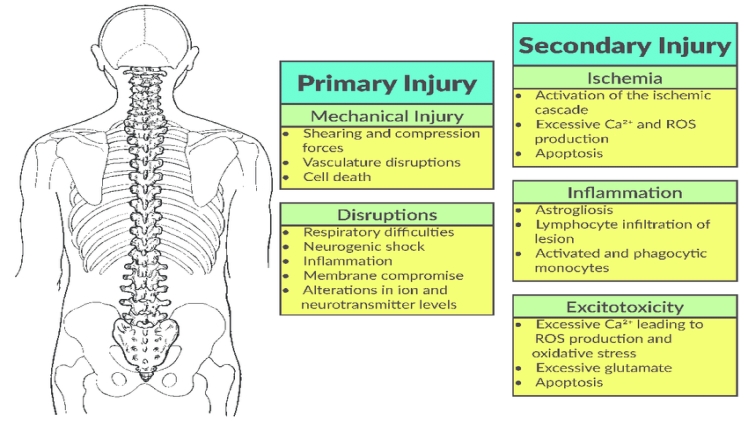The spinal cord is a bundle of nerve cells that carry messages between the brain and the rest of the body. About 98% of all sensory information from our bodies travels to our brain through the spinal cord. This includes touch, pain, heat, and cold. Moreover, the spinal cord is attached to every part of your body and controls muscle movement, including walking and breathing. It also helps regulate blood flow and body temperature.
How is the Spinal Cord Connected to Your Brain?
The spinal cord is connected to the brain via the central nervous system. It transmits information between the body and the brain through a bundle of nerves. The spinal cord is surrounded by the vertebral column, which houses and protects it. The nervous system is made up of two parts:
- The central nervous system (CNS), which includes the brain and spinal cord – This is the main control center for the body. It sends messages to all parts of the body.
- The peripheral nervous system (PNS), which includes all other nerves in the body, (hence the name “peripheral”.)
Categorization of Spinal Cord Injury and Grades
A spinal cord injury (SCI) is damage to the spinal cord, usually caused by trauma to the spinal column. It can result in one of two types of injuries – namely, complete and incomplete. Complete spinal cord injuries usually result in tetraplegia, where all four limbs are paralyzed, while an incomplete injury typically leads to paraplegia, where sensation and voluntary muscles below the level of the spinal cord are preserved. A detailed study of the spinal cord anatomy reveals that damage to the spinal cord can be categorized into grades:
Grades
- Grade A: Injuries classified as Grade A are complete, which means the injury will result in permanent damage.
- Grade B: Grade B spinal cord injury is classified as sensory-incomplete, which means the affected area has sensation but no motor function.
- Grade C: Grade C injuries are motor-incomplete, which means some motor functions may be present in the affected area.
- Grade D: This class of spinal cord injury is also considered to be motor-incomplete, but the motor function is preserved below the neurologic level, and some key muscles below the neurologic level have a muscle grade that is higher than or equal to three. In other words, the affected muscles can be moved against gravity.
- Grade E: Motor and sensory functions are intact and unhindered.
Symptoms
Symptoms of spinal cord damage can include numbness, tingling, pain, loss of bladder control, loss of bowel control, paralysis, weakness, and spasms. Damage to the spinal cord may lead to a wide range of physical disabilities. The severity of a spinal cord injury will depend on the type and severity of the injury, and the patient’s age and general health.
Internal Decapitation
Internal decapitation, also known as traumatic cervical dislocation, is a spinal cord injury in which the head and the spine are separated from one another. This occurs when the topmost vertebrae in the neck is pulled out of alignment so that it pinches off and severs the artery that supplies blood to the brain. This can lead to paralysis or death if not treated quickly. Explore other fascinating topics from lungs and human heart to smooth endoplasmic reticulum and cellular respiration only on BYJU’S Biology.

